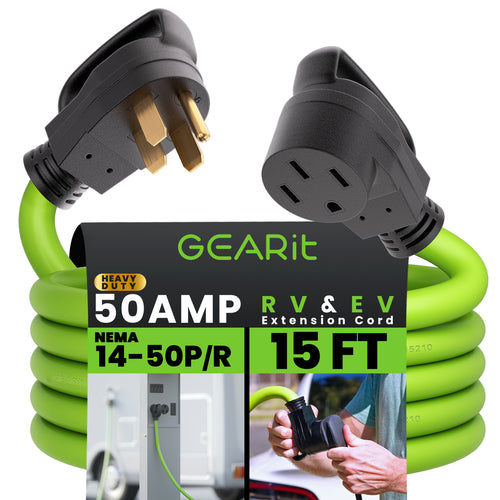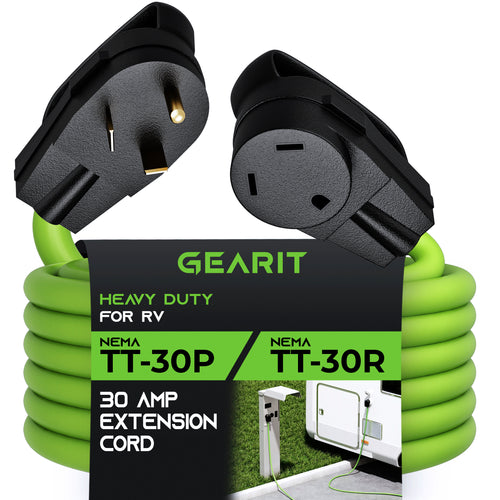
Extension cords are essential tools for RV enthusiasts, campers, and those who need to extend power to their equipment. Among the most popular types are the 30 Amp and 50 Amp extension cords, commonly used for heavy-duty applications. However, like all electrical equipment, these cords can encounter issues that affect their performance and safety. This troubleshooting guide will help you identify and resolve common problems such as overheating, voltage drops, and connection issues with 30 Amp and 50 Amp extension cords.
Understanding 30 Amp and 50 Amp Extension Cords
Before diving into troubleshooting, it's important to understand the differences between 30 Amp and 50 Amp extension cords:
30 Amp Extension Cords
● Amperage: Can handle up to 30 Amps.
● Voltage: Typically 125 volts.
● Prong Configuration: Usually features a TT-30 plug (three-prong).
● Common Uses: RVs, smaller generators, and certain heavy-duty tools.
50 Amp Extension Cords
● Amperage: Can handle up to 50 Amps.
● Voltage: Typically 240 volts.
● Prong Configuration: Usually features a 14-50 plug (four-prong).
● Common Uses: Larger RVs, high-powered generators, and substantial electrical appliances.
Understanding these specifications is crucial for proper usage and troubleshooting.
Common Issues with Extension Cords
Troubleshooting Guide
Identifying the Problem
The first step in troubleshooting is identifying the specific issue. Check for the following symptoms:
● Voltage Drops: Appliances connected to the cord are underperforming.
● Connection Problems: Appliances intermittently lose power or don’t turn on.
1. Check Cord Rating: Ensure the cord's amperage rating matches the load it is carrying.
2. Inspect the Length: Longer cords can cause more resistance and heat. Use the shortest cord possible for your needs.
3. Examine the Environment: Ensure the cord is not exposed to direct sunlight or other heat sources.
4. Inspect the Insulation: Look for any signs of damage or wear on the cord's insulation.
1. Measure Voltage: Use a multimeter to check the voltage at both the source and the end of the cord.
2. Check Cord Length and Gauge: Longer and thinner cords can cause more significant voltage drops. Use a cord with a thicker gauge if necessary.
3. Inspect Connections: Ensure all connections are secure and clean.
Connection Problems
1. Check Plug and Receptacle: Inspect for any visible damage or wear. Replace if necessary.
2. Secure Connections: Make sure plugs are fully inserted and fit snugly into the receptacle.
3. Test with Another Cord: Swap out the extension cord to determine if the issue is with the cord or the appliance.
Preventive Measures
Preventing issues before they occur is the best strategy. Here are some tips:
● Regular Inspection: Routinely check your cords for any signs of wear or damage.
● Proper Storage: Store cords in a cool, dry place away from direct sunlight and moisture.
● Use Appropriate Cords: Always use extension cords rated for the amperage and voltage of your equipment.
● Avoid Overloading: Do not exceed the cord’s rated capacity.
Conclusion
Troubleshooting common problems with 30 Amp and 50 Amp extension cords involves understanding their specifications, identifying symptoms of issues like overheating, voltage drops, and connection problems, and following a systematic approach to resolve these problems. Regular maintenance and preventive measures can significantly enhance the lifespan and performance of your extension cords, ensuring safe and reliable operation.
By following this guide, you can effectively address and prevent the common issues associated with 30 Amp and 50 Amp extension cords, ensuring that your equipment operates safely and efficiently.






















































